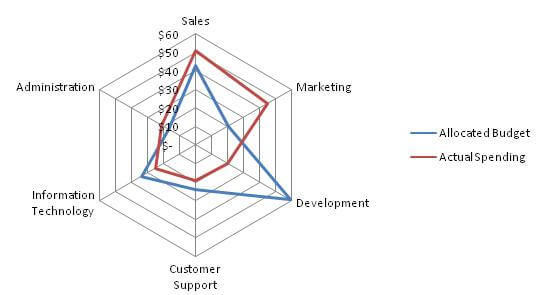
Estimated reading time: 9 minutes
Checking your analytics and realizing that your traffic is dropping can feel like a nightmare. But the fact is that every website on the internet experiences dips in traffic from time to time. It’d be wonderful if we could all enjoy high traffic all the time, but that’s just not the way the internet works. How do you go about diagnosing a sudden drop in website traffic?
We’ve got the steps you need to take to effectively handle such scenarios, so read on:
Step 1: Observe The Drop
No, we don’t mean look at the drop. Observe it and see what you can find out about it at a glance. Does the drop look like traffic plunged overnight? Or is it more of a gradual decrease that’s been happening over the last few days?
Most importantly, check if the traffic is still freefalling or showing signs of improvement.
Step 2: Check The Source
This is the part where you dig a little deeper. It’s easy to assume the worst and think that your organic traffic has taken a hit, but things could be different. Not all website traffic is the same, so check the stats for your direct, organic, paid, referral, and social traffic.
Knowing which source of traffic is facing problems can help you take the right corrective measures. For example, a drop in organic traffic could indicate a penalty from Google, and a paid campaign coming to an end will also decrease traffic to unusually low levels.
Step 3: Check The Damage
You should now see which pages are being affected by the drop. First, find out whether it’s an isolated issue or impacting your whole website. You can do this by using Google Analytics and comparing the week-to-week traffic for your website.
If the effects of the traffic drop can be seen all over your website, it could be the result of an update to the Google algorithms. The second—and more alarming reason for a site-wide drop is the imposition of a penalty. Find out for sure by checking for penalty notifications.
Step 4: Investigate The Causes
Traffic drops often follow major changes to your website. This includes the obvious, more visible changes, such as a redesign, as well as more technical changes that happen behind the scenes.
If you’re also falling in search rankings at the same time as the traffic drop, your usual traffic could be going to your competitors’ websites. Figure out which keywords have been hit the hardest. Then, check your competitors to see if they’ve made noticeable changes, are offering better content, or have introduced an exciting new feature on their site.

Step 5: Did Google Take Your Traffic?
Google’s changes can often lead to traffic drops, too. The search engine is providing answers to an increasing number of queries at the top of search results. If your organic traffic can get its answers from Google without opening a website, they’re less likely to come to you.
The result? Decreased organic traffic.
Step 6: How Healthy Is Your Referral Network?
Losing backlinks can cripple your referral network and lead to losses in referral traffic. Use a tool such as Ahrefs to find out which links you’ve lost and why. Rebuilding your referral network will take time but knowing what to do makes things easier. Link building is a great traffic source for specific pages and particular search queries. Backlinks are something you need to check on a regular basis.

Step 7: Is There A Bigger Reason?
Search patterns can change quickly and dramatically during certain events and at certain times of the year. If this is the case, then you can rest easy knowing that neither your website nor Google is to blame.
Keeping an eye on Google Trends that are relevant to your website can help you assess the public’s interest in a particular topic. This information is useful, as it will let you highlight current trends on your website and focus less on what isn’t being searched for.
Always keep an eye on Google Search Console and make sure your website doesn’t have a Google penalty, especially after a Google update. If you see an organic traffic drop after a Google algorithm update it might be time to do things differently.

How To Respond To A Sudden Drop In Website Traffic
It comes down to this: the sooner you accept that traffic drops are a natural part of running a website and being in the digital marketing game, the better.
Instead of treating traffic drops as reasons to ring the alarm, it’s better to develop a comprehensive plan that helps you deal with traffic drops without panicking. A step-by-step plan will enable you to diagnose sudden drops in website traffic and take the necessary corrective measures—if they’re needed.
It’s also wise to keep your inbound marketing on point so that you can consistently attract new visitors to your website. Here are a few ways of doing that:
1. Share High-Quality Content
Regularly sharing high-quality content that delivers value to your audience helps keep your traffic steady. People will come to your website more frequently once they have an idea of what to expect and when to expect it.
Consider enlisting SEO article writing services take care of content creation for you if you choose not to use Matchbox Design Group’s content writing services. Their optimized content will have the added advantage of improving your rankings for the keywords you want to target.
2. Enact A Well-Planned SEO Strategy
Keeping up with your SEO strategies and best practices has many dividends. The biggest one is that it will boost your organic search traffic.
Ensure you’re doing everything you can to secure prominence in search engine results by fine-tuning your on-page, off-page, and technical SEO as often as required. For professional assistance, you can hire an SEO service provider.
3. Use All Available Channels
Don’t leverage one inbound marketing channel at the expense of the others. Learn about all the different inbound marketing channels and use all of them to your advantage. We’re talking about social media, real-world events, blogs, and even e-mail marketing.
4. Monitor and Adapt
Keep a watchful eye on your website’s performance by setting up ongoing monitoring mechanisms. Regularly delve into analytics tools, such as Google Analytics, to stay ahead of changes in traffic patterns. Being proactive enables you to adapt swiftly to emerging trends or issues, ensuring your website stays resilient in the ever-evolving digital landscape.
5. User Feedback and Engagement
Gather insights directly from your audience through surveys, comments, or social media interactions. User feedback offers a valuable perspective on how changes are perceived on your website. Addressing user concerns not only enhances the overall user experience but also provides an opportunity to mitigate the impact of a traffic drop.
6. Mobile-Friendliness Check
Don’t overlook the significance of mobile responsiveness. With a substantial number of users accessing websites on mobile devices, optimizing your site for mobile viewing is crucial. Google considers mobile-friendliness in its rankings, and a drop in mobile traffic may signal issues with your site’s mobile experience.
7. Content Update and Refresh
Keep your content dynamic by regularly updating and refreshing existing material. Outdated or stagnant content can contribute to a decline in traffic. Revisit and enhance older articles to ensure they remain relevant and valuable to your audience.
8. Technical Audit
Conduct a comprehensive technical audit to identify issues impacting user experience and search engine rankings. Check for broken links, slow-loading pages, or other technical glitches. Addressing these issues can significantly contribute to improved website performance.
9. Social Media Strategy
Leverage the power of social media to drive traffic. Ensure your social media strategy aligns with your content and marketing efforts. Share new content, engage with your audience, and use social platforms as a catalyst to redirect traffic back to your website.
10. Promotional Tactics
Explore various promotional tactics to enhance visibility. Consider email marketing campaigns, influencer collaborations, or strategic partnerships to broaden your website’s reach and attract new visitors.
11. Future-Proofing Strategies
Stay ahead of potential challenges by future-proofing your website. Stay informed about industry trends, adapt to algorithm changes, and continuously optimize your website for better performance.12. Analytics Alerts:
Set up alerts in your analytics tools to receive notifications for significant changes in traffic. This proactive approach allows you to address issues promptly, ensuring you catch and rectify problems before they lead to a substantial decline in traffic.
Key Takeaways
- Traffic Fluctuations Are Normal:
Acknowledge that dips in website traffic are a natural part of the digital landscape. Instead of panicking, view them as opportunities to assess and refine your strategies. - Systematic Observation is Crucial:
When faced with a traffic drop, systematically observe the situation. Determine whether it’s a sudden plunge or a gradual decrease, and assess whether the trend is improving or worsening. - Source Differentiation Matters:
Not all website traffic is the same. Differentiate between direct, organic, paid, referral, and social traffic to identify the specific source facing issues and tailor corrective measures accordingly. - Page-Level Analysis is Key:
Identify which pages are affected by the traffic drop. Differentiate between isolated issues and site-wide impacts, using tools like Google Analytics to compare week-to-week traffic. - Investigate Changes and Causes:
Major changes to your website, both visible and technical, can contribute to traffic drops. Investigate search ranking changes, keyword performance, and competitors’ strategies to pinpoint the causes. - Google’s Role in Traffic Drops:
Be aware of Google’s impact on traffic. Algorithm updates and changes in how search results are displayed can influence organic traffic. Adapt your content strategy accordingly. - Referral Network Health Matters:
Losing backlinks can harm your referral network. Regularly check for lost links and invest in rebuilding your referral network to maintain healthy traffic sources. - Consider External Factors:
External events and changing search patterns can influence traffic. Monitor Google Trends and stay informed about industry shifts to align your content with current interests. - Proactive Monitoring is Essential:
Set up ongoing monitoring mechanisms, use analytics alerts, and stay informed about emerging trends to proactively manage and adapt to changes, ensuring your website remains resilient. - Diversify and Future-Proof:
Diversify your inbound marketing channels, including social media, real-world events, blogs, and email marketing. Additionally, future-proof your website by staying updated on industry trends and consistently optimizing for performance.
Remember, traffic drops are challenges to overcome, not reasons to despair. A strategic and proactive approach will not only help you diagnose issues but also position your website for sustained success in the dynamic digital landscape.
Contact Matchbox Design Group Today!
If your website could use a refresh or you’re looking to drive more traffic to your site, fill out the form below and we’ll contact you to learn more about your digital needs.

